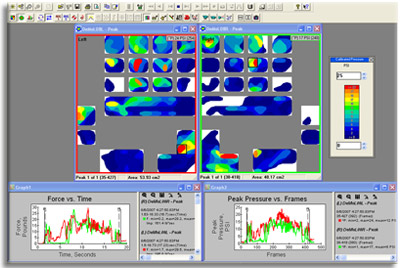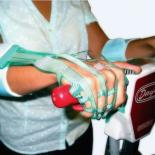Ergonomic Grip Assessment With Tactile Pressure Sensors
Challenge
Companies are constantly facing a challenge: maximize efficiency and performance of employees while making tasks, jobs, and products compatible with human capabilities and needs. Ergonomists need to maximize productivity while reducing operator fatigue and discomfort. A critical part of this is knowing the pressure exerted by the hand when gripping and using objects.
Solution
The Grip™ System can be used to identify and examine forces and pressure felt by each finger, the thumb and palm, improving product design and/or optimizing employee performance.
The Grip pressure mapping system records the dynamic pressures and forces hands and fingers apply while grasping, gripping, holding, moving, lifting, and using objects, allowing one subject to sequentially grip several objects in many ways. Sensors are available in different shapes, are reusable, and provide accurate pressure readings. With the help of Tekscan's highly qualified sales and engineering support team, each system may be configured to meet your specific needs.
 Above: Pressure data collected while subject operates an industrial floor polisher. Comparisons of Force vs. Time and Peak Pressure vs. Frames are shown for both the Left and Right hands. Peak pressure areas were detected on the left hand along the palm, while the right hand experience greater pressure in the middle phalanx of the second finger.
Above: Pressure data collected while subject operates an industrial floor polisher. Comparisons of Force vs. Time and Peak Pressure vs. Frames are shown for both the Left and Right hands. Peak pressure areas were detected on the left hand along the palm, while the right hand experience greater pressure in the middle phalanx of the second finger.
Ergonomic Grip Pressure Mapping Applications
- Identify high/low pressures on a hand
- Determine required forces needed to grasp an object
- Detect effects of vibration
- R&D for new product design
Benefits of Pressure Mapping
- One subject can grip several objects, in many ways, once the hand is instrumented
- Sensor position can be optimized to identify pressure on regions of the hand during various grips/maneuvers
- Fast sensor response and high scan rate up to 850 Hz
See how Pressure Mapping Technology can help product designers test for comfort:


